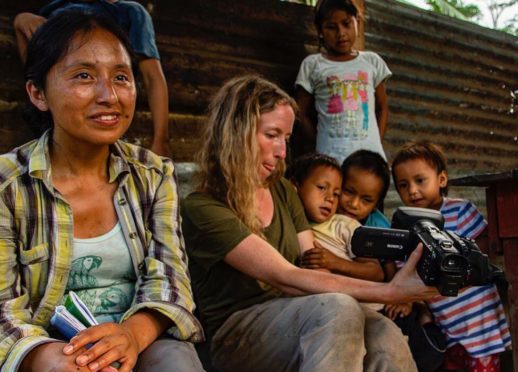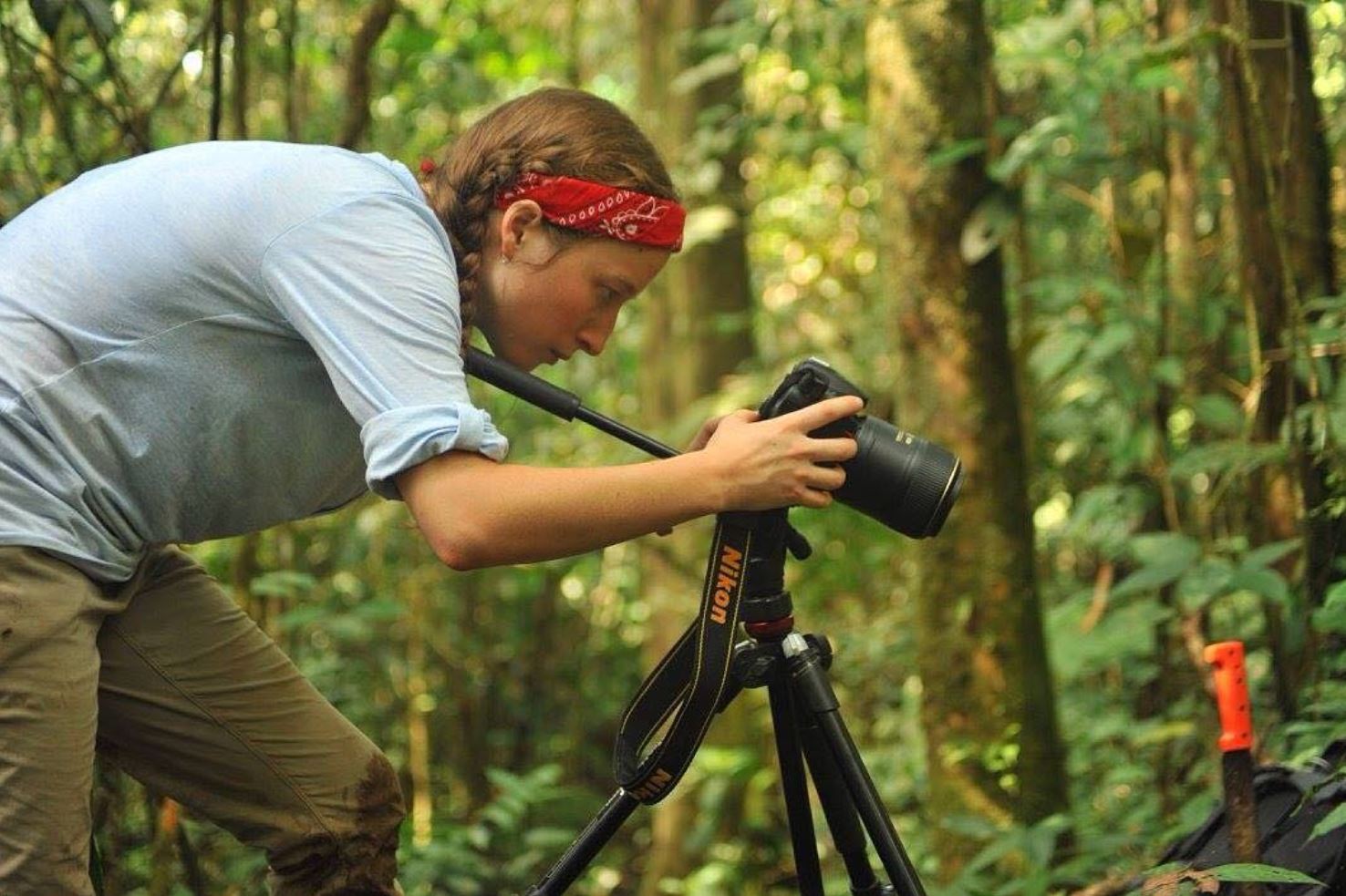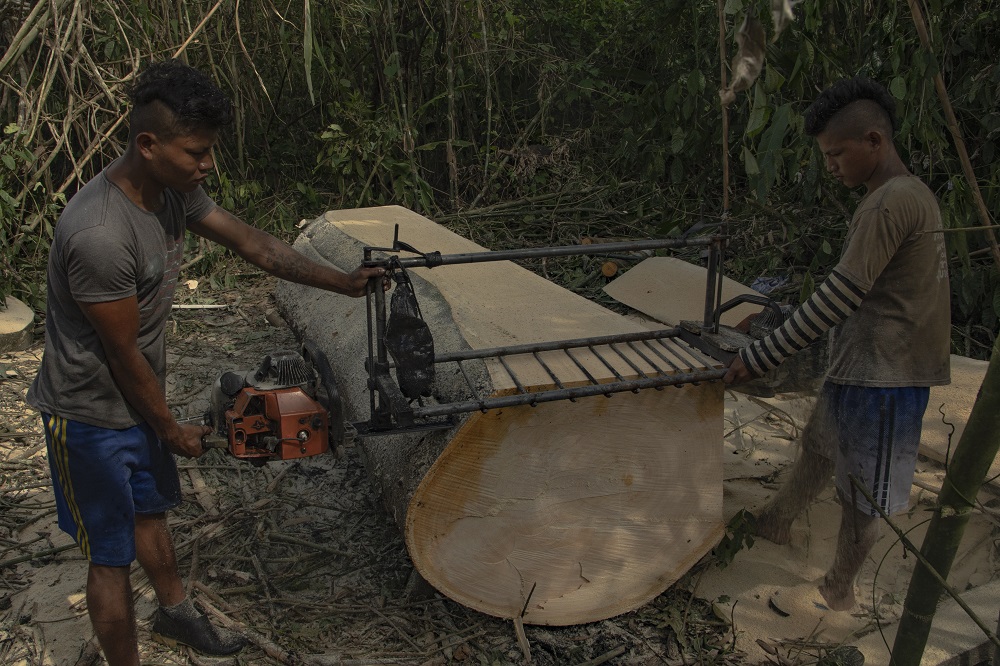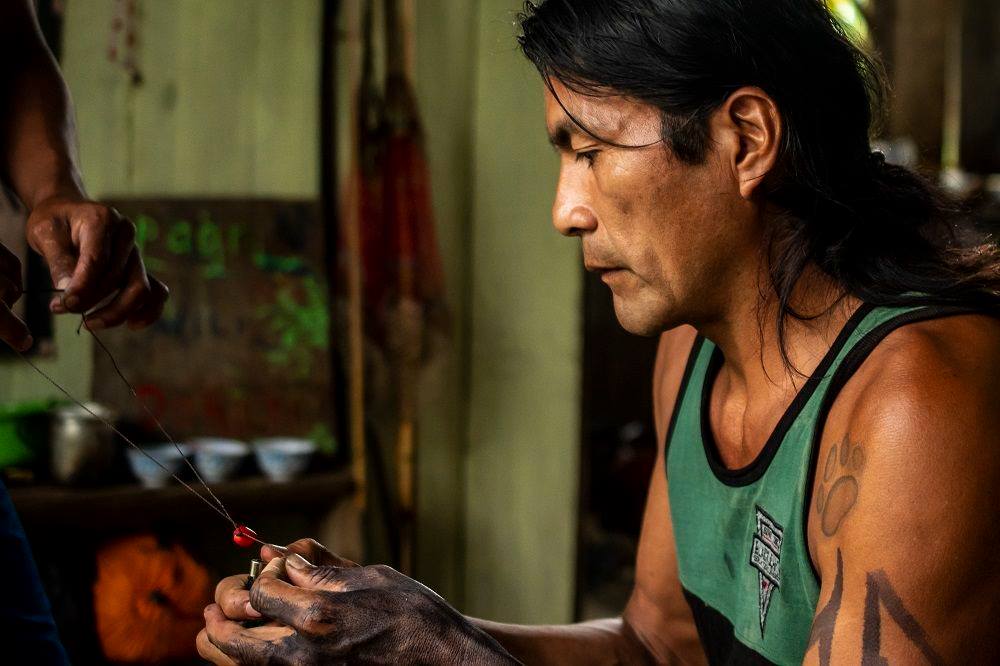
As images of uncontrollable flames and plumes of smoke engulfing the planet’s largest rainforest continue to hit headlines, the world has been inspired to horror.
The Amazon rainforest, home to one tenth of the planet’s animal and plant species, around one million indigenous people and an estimated 390 billion trees is still in the grips of an uncontrollable blaze.
The fires were originally tacitly encouraged, say environmentalists, by Brazilian President Jair Bolsanaro who has emboldened loggers and farmers to clear and burn land since taking office in January.
Celebrities, including Leonardo DiCaprio and Vanessa Hudgens have donated to the rainforest relief efforts as well as politicians, protesters and activists worldwide springing into action.
But a Scottish filmmaker had been working to raise awareness about issues facing the Amazon long before the raging fires of summer 2019 jolted the world into taking notice.
Eilidh Munro, 29, from Edinburgh, along with environmental journalist, Bethan John have been, for the past two years, working to create Voices on the Road, a 25-minute documentary due to launch later this year, which shows the effects of fire, logging, and farming on the Amazon rainforest.
Focussing specifically on a new road being built through a protected UNESCO World Heritage Site, the Manu Biosphere Reserve in the Peruvian Amazon, the team wanted to give a platform to the voices of previously unheard indigenous groups and determine why local people are helping to destroy an area of diverse natural and cultural heritage.
In November 2018, the small team spent 40 days trekking through the Amazon jungle in south eastern Peru (near where the blazes are currently raging in Brazil) alongside expedition teammate Shirley Jennifer Serrano Rojas, a biologist from Cusco, where they lived with and interviewed remote native communities.
What they found were groups of people polarised by preserving their native homelands while trying to adapt to the changing world around them.
“The Manu road started being illegally built in 2015, but was stopped by the Ministry of the Environment. For the past three years, indigenous communities and the regional governor have been campaigning for this road to be completed, with local politicians claiming that the road is for the benefit of native communities living in Manu,” said Eilidh.
“After a three-year battle over the road’s construction, work was resumed in November last year.
“I had been working in Peru previously so had heard about the road, but as far as we were aware, no-one had spoken to the indigenous communities to actually understand if and why they did want the road.
“So we decided to make the film to tell their stories.”
With funding from the Scientific Exploration Society and £15,000 raised through Crowdfunding, Eilidh, Bethan and Shirley were able to create the documentary and speak to three indigenous groups in the area, Shintuya, Shipetiari and Diamante, each with their own unique way of life.
“The Diamante people have never experienced the impacts of a road, but they also have no electricity, running water, decent health service or education,” continued Eilidh.
“It’s also too expensive for people to leave to go to the hospital and they can’t make any profit from their products.
“So indigenous communities want the road, despite the negative impacts it might bring.
“Indigenous people are being promised that when the road comes they’ll get clean water, and they’ll get solutions to all of their problems.
“But in Shintuya, where there has been road connection for 50 years, the reality from the people we spoke to was that not only had roads not brought these solutions, there’s been huge cultural loss, more pollution to the environment, and deforestation.”
But it’s also not as simple as placing blame on the people who are building the road, or logging the area, believes Eilidh, who says her attitude to the activities affecting the Amazon completely changed during filming.
“While the impact of the people who clear the forest for logging or agriculture is negative, these will often be people who are escaping poverty elsewhere, or in the case of the indigenous communities, their only option to make money.
“If there’s no better option on the table, what choice do they have?
“It’s a systemic problem, a problem that stems from politicians encouraging people to do things that are going to financially benefit the state and not the individual or the environment, but telling them that it will.”
Until recently, pockets of the Manu Biosphere Reserve had been relatively removed from the environmental impacts affecting the wider Amazon, but now the illegal road promises to open the area to the same issues of burning, farming, logging and the threat of drugs trafficking.
“Since the 1950s, across the Amazon, governments have been selling land cheaply to farmers to come and log and to make money from the natural resources,” said Eilidh.
“So not only do you have a lot of people encroaching on, and bringing their cultural impact to the indigenous communities, but they use farming techniques that work where they’re from, in the Andes for example, but whichthat don’t necessarily work in a tropical rainforest.
“This is where the slash and burn agriculture we’re seeing across the Amazon comes in.
“Basically, they log the forest, burn it because it adds nutrients to the soil and then farm the land.
“But generally people are farming one type of crop so it sucks all the nutrients out and the soil then become useless and you can’t sustain it.
“So that means they have to move on and clear another part, contributing to alarming rates of deforestation.”
The slash and burn method is also predominantly used by cattle ranchers to clear land for pasture, and fuelled by dry conditions this summer, has been blamed for the now out of control fires in the Amazon.
According to the National Institute for Space Research, Brazil, there have been 74,000 fires in the Brazilian Amazon since the beginning of this year – an 84 per cent increase over the same period last year.
20 per cent of the Amazon is already gone thanks to deforestation, vanishing at a rate of 20,000 square miles a year.
So is there any hope left?
“I do think there’s still hope,” said Eilidh.
“There’s also a big movement which is proving that protecting indigenous land rights is by far the best way to protect the environment and there are recent examples of South American indigenous groups who have successfully sued governments for misleading them in discussions around construction on their indigenous land, so there are small steps being made.
“As we’ve seen in the huge reaction to the fires this summer, I think more than ever people are interested, and willing to engage with conservation, whereas not all that long ago it was a topic that only certain people wanted to hear about, and it was too depressing for most.
“But now, for one reason or another, there’s a real movement to make the world better, with people caring more and becoming really engaged with the environment around them, and that’s a positive in itself.
She added: “If anyone wants to help with the Amazon rainforest effort and isn’t sure how, you can donate to organisations like Rainforest Alliance and Amazon Conservation, who provide satellite image tracking of the fires and provide on the ground training to tackle blazes.”

Enjoy the convenience of having The Sunday Post delivered as a digital ePaper straight to your smartphone, tablet or computer.
Subscribe for only £5.49 a month and enjoy all the benefits of the printed paper as a digital replica.
Subscribe
 © Eilidh Munro/Bethan John
© Eilidh Munro/Bethan John  © Eilidh Munro/Bethan John
© Eilidh Munro/Bethan John